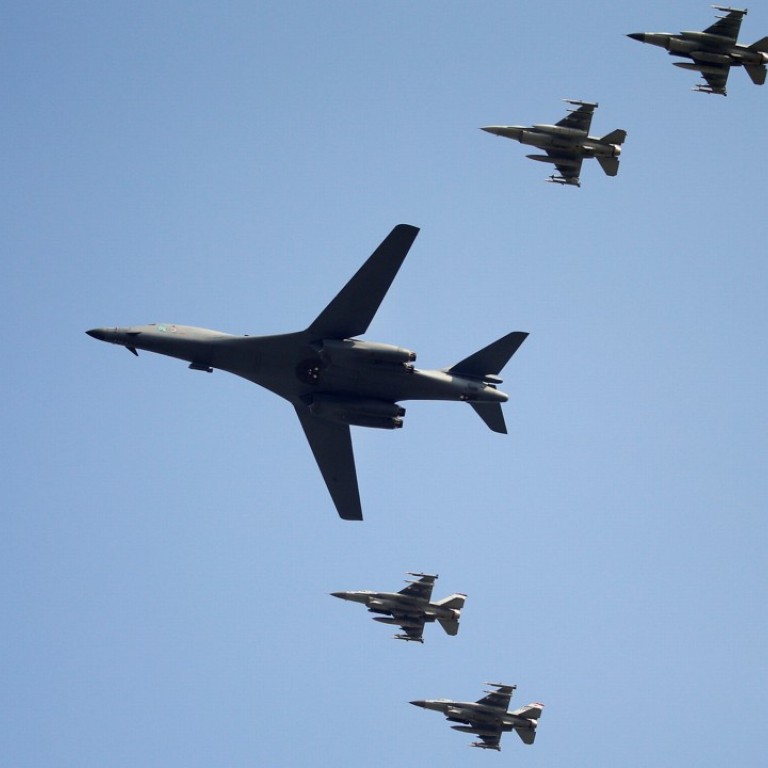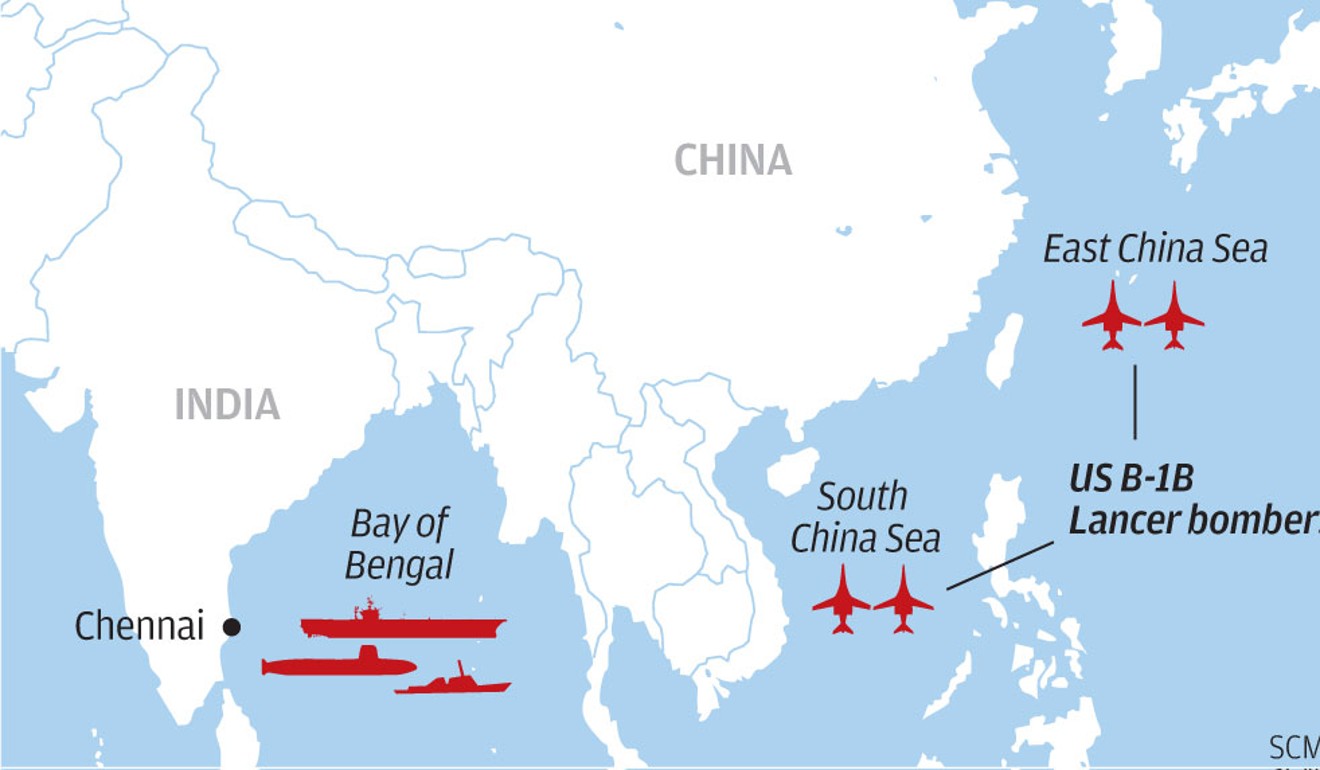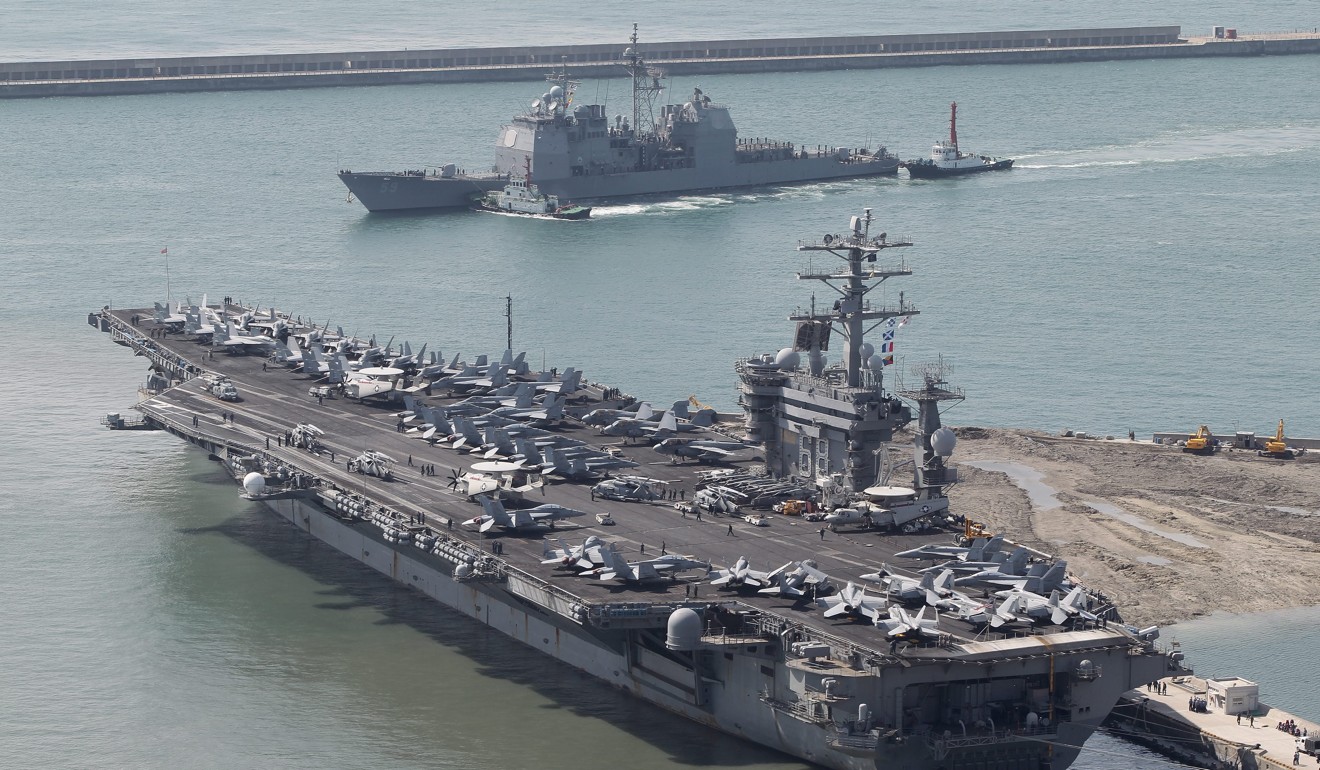
US bombers fly over East, South China seas, inciting Chinese anger as tensions mount over North Korea crisis
Drills in the South and East China seas and in waters off India seek to pressure China to take firmer action against Pyongyang
US bombers flew over the disputed South China Sea a day ahead of joint drills with Japanese fighter jets over the East China Sea, the US military said on Friday as Washington stepped up pressure on Beijing over North Korea’s nuclear and missile programmes.
In another deployment, the US 7th Fleet along with the aircraft carrier USS Nimitz began an 11-day joint exercise with Indian and Japanese forces in the Bay of Bengal on Friday.
The military activity came amid heightened tensions in the region after North Korea test-fired a missile it claimed had the ability to hit the continental US.
US President Donald Trump, Japanese Prime Minister Shinzo Abe and South Korea’s new president Moon Jae-in reached an agreement on Thursday to step up pressure on North Korea to curb its weapons development in the wake of the test.
China and Russia meanwhile have called for an end to military exercises and missile tests on both sides and the resumption of dialogue.

Chinese foreign ministry spokesman Geng Shuang said on Friday that China opposed the use of freedom of overflight as an excuse to harm its security, in remarks on the flight of the two US bombers over the South China Sea.
Meeting in the German city of Hamburg ahead of the G20 summit, the three leaders also affirmed they would coordinate on adopting a new UN Security Council sanctions resolution on North Korea, as well as on pushing China to help halt Pyongyang’s missile and nuclear weapons programme.
In Washington, State Department spokeswoman Heather Nauert said at a briefing on Thursday that the US believed China could do much more to increase pressure on North Korea. She added that Washington saw no equivalence between North Korea’s weapons programmes and US-South Korean military exercises, and so did not support a Russian-Chinese plan calling for both sides to freeze their activities.
The US Air Force said in a statement on Friday that two bombers had flown over the disputed South China Sea, asserting the right to treat the region as international territory, despite China’s territorial claims in the busy waterway.

Separately, two B-1B bombers trained with Japanese jet fighters in the neighbouring East China Sea, the first time the two forces have ever conducted nighttime drills. China and Japan have a long-standing dispute over a tiny, uninhabited archipelago in the East China Sea called the Diaoyu Islands by China and the Senkaku Islands by Japan, which controls them.

Meanwhile, ships, aircraft and personnel from India, Japan and the United States took part in the Malabar 2017 exercise in waters off India on Friday, according to the website of the 7th Fleet.
The exercise would feature both onshore and sea training, with the Nimitz aircraft carrier and its battle group joining the guided-missile cruiser USS Princeton, the guided-missile destroyer USS Howard and Los Angeles-class fast-attack submarines, the website said.
The exercise would focus on carrier strike group operations, maritime patrols and reconnaissance, surface and anti-submarine warfare, as well as search and rescue operations, it said.


